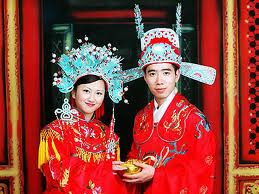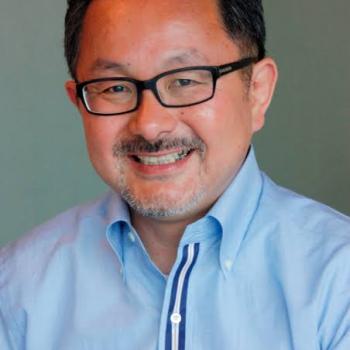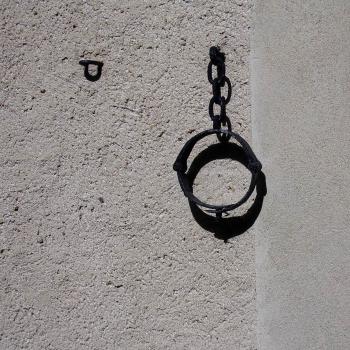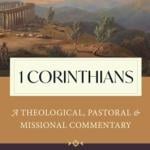The Global China Center ran a two-part series entitled “Respecting Chinese Culture: The Example of Hudson Taylor.“
Since Hudson Taylor is an iconic missionary figure not only in China but throughout the Protestant world, I thought it worth a look at their comments. In the essays, D. G. Wright Doyle defends Taylor against the charge of some modern “liberal” scholars like Timothy Richard who claim Taylor was not as respectful of Chinese culture as some make him out to be. Overall, I think Doyle’s argument is sound and properly addresses the anachronism of Richard.
I’m most interested however in interacting with Taylor’s thought and practice, seeing if we can glean any insights for today. In Part One, Doyle highlights some of the better known aspects of Taylor’s work, including the fact that Taylor and his China Inland Mission (CIM) workers took on Chinese dress, were vigorous about learning the language, and sought to use conventional accommodations and food. Taylor, himself a doctor, even tried to use Chinese medicine.
Taylor was highly controversial in his day among other missionaries. The sort of contextualization seen in Taylor was methodological, not theological. That is, we don’t see him attempting anything like the Jesuits before him who tried to find some modified use of natural theology to communicate the truths of God. Taylor preached a standard Protestant message for his day.
This all makes me wonder, “What methods would provoke the same sort of response from modern mission agencies yet could ultimately be deemed faithful?”
1. Dress
This issue seems less of a window in our day than in Taylor’s. After all, Chinese now dress pretty Western. Perhaps, one could argue 10 years again that wearing jeans indicated a fair bit of wealth. Nowadays, among urbanites, the only real difference one could point out is style; Of course, when you head to west China or in the mountains, things get more conservative.
2. Language
I would argue that contemporary missionaries in China, on the whole, are rather lackadaisical when it comes to language learning. Of course, I’m speaking in broad terms, since many do indeed work very hard at it. Nevertheless, so many people learn just enough to share a basic salvation message, give their testimony, and do a few training lessons. Once they pass a language test, whether one given by their agency or a formalizes national test, discipline quickly wanes. We are not even talking about theological language, which the vast majority of missionaries remain ignorant of.
3. Familiarity with Classical Chinese Literature
I’m a teacher and the equivalent way of describing modern missionary practice in this area would be to say, “They don’t merely fail. They don’t even turn in the assignment because it’s not even on their syllabus.”
4. Housing, Food, and Medicine
Every missionary (not simply expat) I’ve met lives in housing that would place in them somewhere around the middle to upper-middle class of Chinese society. This is what Chinese would expect. It probably would set off some alarms if they “slummed” it too much. Nevertheless, one could argue that one the inside of houses, missionaries could simply their living as an example to the Chinese who have wholeheartedly taken on American consumerism. Chinese would be shocked to see Americans living simply since getting more, more, more is the assumed goal.
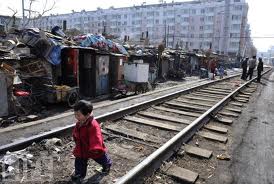 Food? Generally, I see missionaries do ok here, however it is shocking to me how many of them detest Chinese food and will hardly fake it. They don’t like the taste and don’t do much to develop a taste for it. The result is that they depend on foreign food dealers, which means their cost of living goes up. The distaste for Chinese food does not go unnoticed by the locals. After a while, they eventually take it as a pseudo-rejection of them. It’s effort that matters most to them.
Food? Generally, I see missionaries do ok here, however it is shocking to me how many of them detest Chinese food and will hardly fake it. They don’t like the taste and don’t do much to develop a taste for it. The result is that they depend on foreign food dealers, which means their cost of living goes up. The distaste for Chinese food does not go unnoticed by the locals. After a while, they eventually take it as a pseudo-rejection of them. It’s effort that matters most to them.
Medicine. There’s really two parts to this. First is the use of traditional Chinese medicine. most missionaries are not doctors like Taylor and a vast number of Chinese don’t even use traditional methods consistently, so it’s hard to press this issue too hard. Second is the use of national hospitals versus western hospitals. Again, this is tough to adjudicate. I know for a fact hospitals have sometimes turned away westerners because doctors were afraid to lose face if they messed up on a Westerner. Also, doctors will just take time off and there will be no one to replace them at the hospital. This means you are out of luck if you need something urgent during that time period. Chinese people will be the first to tell you that many, many doctors will gladly pad their pockets with extra but unnecessary services. This naturally breeds distrust about the given prognosis and prescription. On the other hand, some missionaries and their agencies can be a bit paranoid, as if locals have never given stitches before or doctors in big cities couldn’t reset a bone. In total, it’s too hard to give a sweeping grade on this subject.
What else?
What are some potential areas of opportunity today?
Theological training? Today, the average missionary to China has little to no seminary level training beneath their belt.
Travel? Many Westerners fly home every summer and as a result never really settle in. How might that affect their own sense of identification, cultural acclimation, as well as the way they are perceived by nationals?
Time? What if Westerners took naps in the middle to the day so they could both wake up early and stay up late, like Chinese do? This would mean being “less productive” in a day.
When it comes to daily practice, what else might be Tayloresque?


